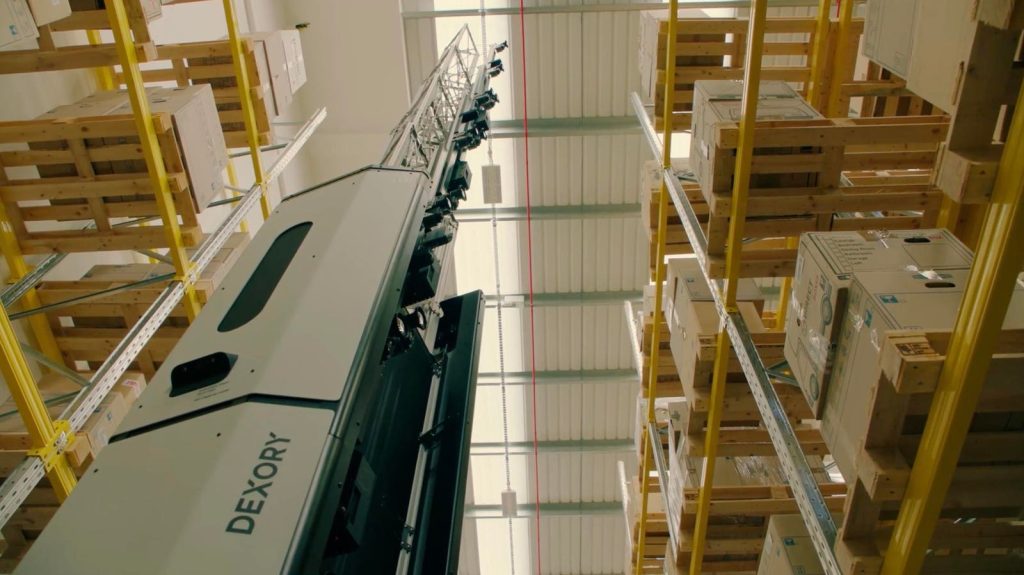The world’s tallest autonomous robot is 45 feet tall, weighs over 1,500 pounds, and can carry more than 12 high definition cameras in addition to sensors for temperature, humidity, noise, and light. It is also completely not scary, especially because it is a mild-mannered get-out-of-your-way warehouse and logistics robot that is perfectly safe around people and will happily scan over a million square feet and 100,000 pallets every 24 hours, all on its own.
You can think of it as a giant Roomba, except that it has no name at all.
“It’s completely autonomous in terms of looking after its state of charge and after its battery,” says Dexory CEO Andrei Danescu in a recent TechFirst podcast. “Very similar to household robots.”
The goal is simple: complete and up-to-date information awareness of what’s in a warehouse, what condition it is in, and where it is. That’s extremely necessary not only in today’s increasingly automated warehouses, but also as we approach the same-hour near-instant-fulfillment era of drone delivery.
Essentially, it builds a digital twin of a warehouse in near real time with all the data a logistics company might want.
“You would like to know everything that’s going on in the warehouse, every single pallet movement, how much product you have in every single location, and also things like what are the conditions in which you’re storing the goods,” says Danescu. “What’s the temperature, humidity? How long were the goods there for? Why hasn’t this location been turned over, or why haven’t the goods moved? And that’s exactly what our technology does.”
The robot, which doesn’t have a name, trundles down the aisles in a warehouse, sensing its environment and navigating with a proprietary implementation of simultaneous localization and mapping (SLAM). It avoids people and any obstacles, and scans everything on the racks continuously. The data is uploaded to a warehouse management system and forms a digital twin of the warehouse contents, thanks to software that uses pallet numbers, barcodes, and machine vision technologies to decode what each box or pallet contains. When it’s hungry for some more electricity, the robot navigates to a charging station, recharges for a few hours, and automatically returns to work.
Dexory says the robot and software system boosts warehouse efficiency, citing increase from 90% pre-robot to 99.56%.
(Warehouse efficiency measures depend on specific metrics individual companies track, but include things like inventory accuracy, ability to find stored product, time to access and fetch product, ability to utilize space efficiently, cost of labor and so on.)
Globally, companies spend an estimated $350 billion a year on warehousing, says McKinsey, and that cost is going up as we add more SKUs and require faster delivery direct to consumers, meaning smaller but more frequent orders. Digital twins and digital warehouse design can boost efficiency by 20-25%, the company estimates.
Robots and smart software can help, says Dexory.
“It’s a global visibility platform, so you could deploy this across a hundred warehouses, and you have one central location where you have access to all the data.”
Read the full article here






